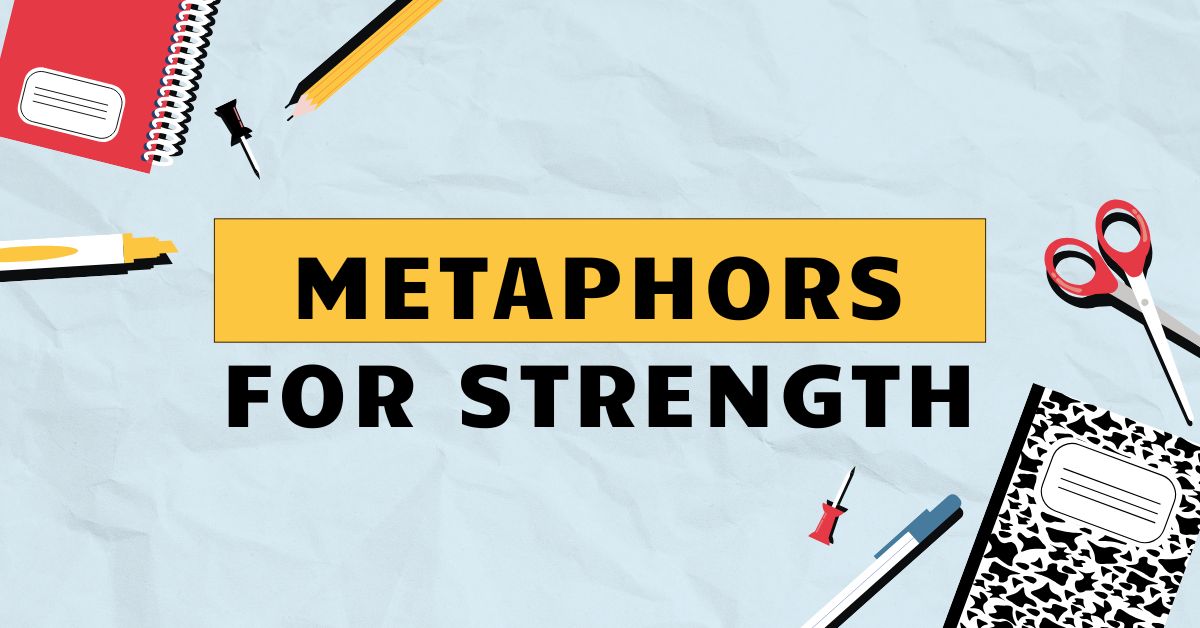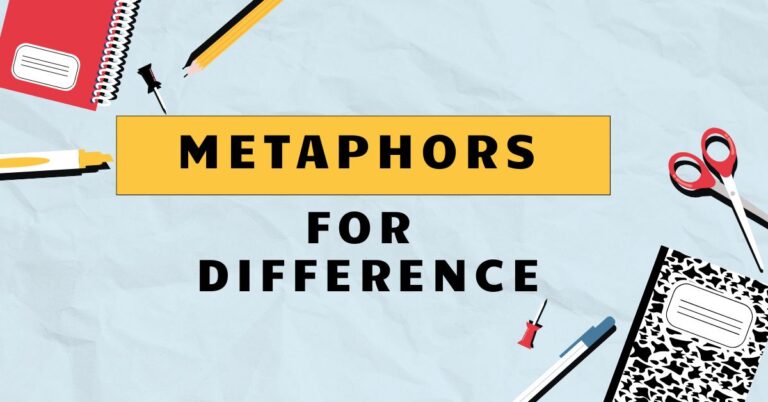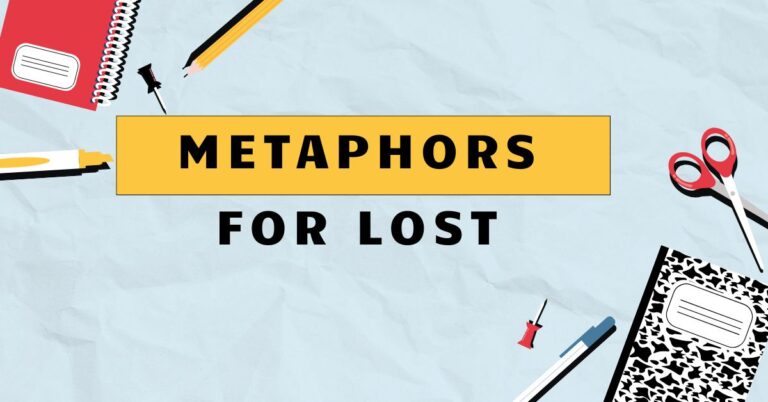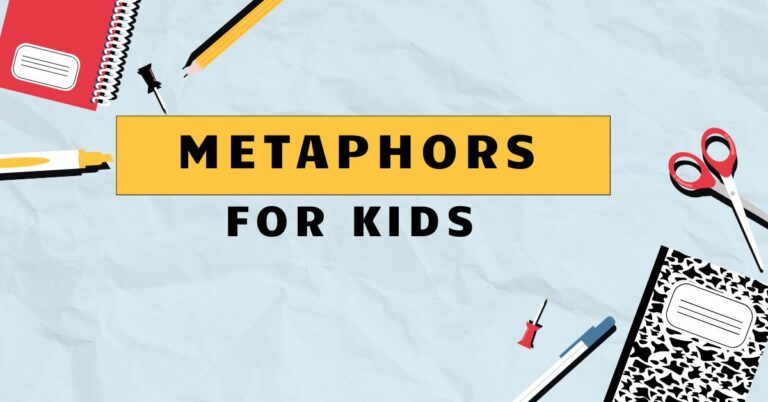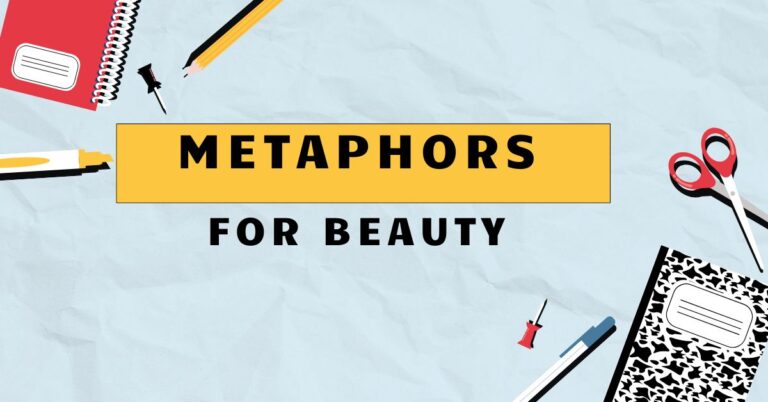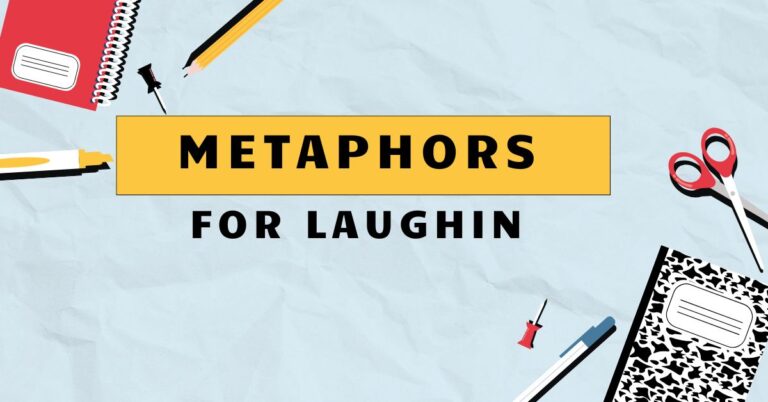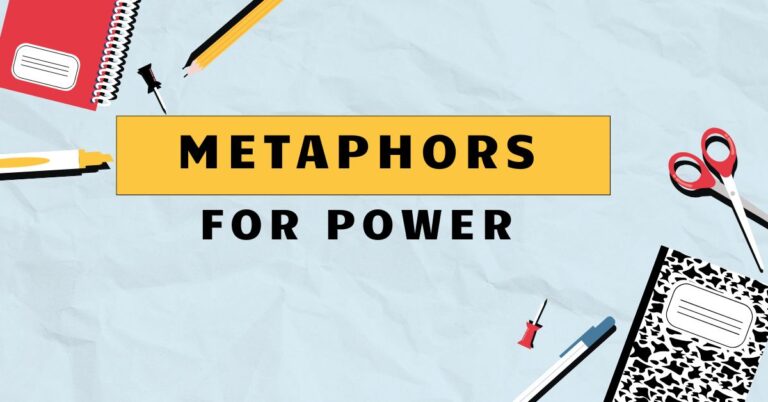43+ Metaphors for Strength: Power Through Figurative Language
Metaphors are powerful tools that enrich our language, allowing us to express abstract concepts like strength in vivid and relatable ways. Understanding how metaphors function, particularly those relating to strength, enhances our ability to communicate effectively and appreciate the nuances of the English language.
This article explores various metaphors for strength, their structural components, usage rules, and common pitfalls, providing a comprehensive guide for learners of all levels. Whether you’re aiming to improve your writing, enhance your comprehension, or simply appreciate the art of figurative language, this guide will equip you with the knowledge and skills to master metaphors for strength.
Table of Contents
- Introduction
- Definition of Metaphor and Strength
- What is a Metaphor?
- Defining Strength
- Structural Breakdown of Strength Metaphors
- Source Domain
- Target Domain
- Mapping
- Types and Categories of Strength Metaphors
- Physical Strength Metaphors
- Emotional Strength Metaphors
- Mental Strength Metaphors
- Moral Strength Metaphors
- Economic Strength Metaphors
- Examples of Strength Metaphors
- Physical Strength Examples
- Emotional Strength Examples
- Mental Strength Examples
- Moral Strength Examples
- Economic Strength Examples
- Usage Rules for Strength Metaphors
- Context and Appropriateness
- Cultural Sensitivity
- Avoiding Overuse and Clichés
- Common Mistakes with Strength Metaphors
- Mixed Metaphors
- Literal Interpretation
- Inappropriate Metaphors
- Practice Exercises
- Exercise 1: Identifying Strength Metaphors
- Exercise 2: Creating Strength Metaphors
- Exercise 3: Correcting Misused Metaphors
- Advanced Topics in Strength Metaphors
- Extended Metaphors
- Dead Metaphors
- Conceptual Metaphors
- Frequently Asked Questions
- Conclusion
Definition of Metaphor and Strength
To understand metaphors for strength, we must first define both metaphor and strength independently. This provides a solid foundation for exploring their intersection.
What is a Metaphor?
A metaphor is a figure of speech that directly compares two unrelated things, asserting that one thingisanother. It’s not a literal comparison; instead, it implies a similarity or shared quality between the two.
Metaphors are used to create vivid imagery, convey complex ideas simply, and evoke emotional responses. The power of a metaphor lies in its ability to transfer qualities from one concept to another, enriching our understanding.
For example, saying “He is a lion in battle” doesn’t mean he is literally a lion. It means he possesses qualities associated with a lion, such as courage, ferocity, and power.
Defining Strength
Strength, in its broadest sense, refers to the quality of being physically powerful, mentally resilient, emotionally stable, or morally upright. It can manifest in various forms, including physical force, emotional fortitude, intellectual capacity, and ethical conviction.
Strength is often associated with the ability to withstand pressure, overcome challenges, and persevere in the face of adversity.
Understanding the multifaceted nature of strength is crucial for recognizing and interpreting the diverse metaphors used to describe it. Strength isn’t limited to physical prowess; it encompasses a wide range of attributes that enable individuals and entities to thrive.
Structural Breakdown of Strength Metaphors
Metaphors operate by transferring characteristics from one conceptual domain to another. Understanding this process, known as conceptual metaphor theory, helps us analyze how strength metaphors are constructed.
Source Domain
Thesource domainis the conceptual area from which the metaphorical language is drawn. In the context of strength metaphors, the source domain often includes concrete, tangible concepts like physical objects, animals, or natural forces.
These familiar domains provide a basis for understanding the more abstract concept of strength.
Examples of source domains for strength metaphors include: rocks, trees, steel, lions, storms, and mountains. These domains are chosen because they are commonly associated with qualities like resilience, power, and stability.
Target Domain
Thetarget domainis the abstract concept that is being described or understood through the metaphor. In our case, the target domain isstrengthitself.
This could be physical strength, emotional strength, mental strength, or any other type of strength we wish to convey.
The goal of using a metaphor is to illuminate the target domain (strength) by drawing parallels with the source domain (e.g., a rock). This allows us to grasp the nuances of strength in a more intuitive and relatable way.
Mapping
Mappingis the process of connecting specific aspects of the source domain to corresponding aspects of the target domain. This involves identifying the shared qualities or attributes that justify the metaphorical comparison.
Effective mapping is crucial for creating meaningful and resonant metaphors.
For example, if we say “He has the strength of an ox,” the mapping involves connecting the ox’s physical power, endurance, and unwavering determination to the person’s ability to overcome challenges.
Types and Categories of Strength Metaphors
Strength metaphors can be categorized based on the type of strength they describe. Understanding these categories helps us appreciate the versatility and scope of metaphorical language.
Physical Strength Metaphors
These metaphors relate to the body’s ability to exert force or withstand physical pressure. They often draw comparisons to objects or animals known for their physical power.
Examples include: “He is built like a brick wall,” “She has the strength of a bear,” and “His muscles are like iron cables.” These metaphors emphasize the raw power and resilience of the physical body.
Emotional Strength Metaphors
Emotional strength metaphors describe the capacity to cope with stress, trauma, and adversity. They often invoke images of resilience, stability, and inner fortitude.
Examples include: “She is a rock for her family,” “He has a heart of steel,” and “They weathered the storm of grief.” These metaphors highlight the ability to remain steadfast and supportive in challenging emotional circumstances.
Mental Strength Metaphors
These metaphors focus on intellectual capacity, determination, and cognitive resilience. They frequently compare the mind to structures or materials that embody these qualities.
Examples include: “Her mind is a steel trap,” “He has an iron will,” and “She is a fortress of knowledge.” These metaphors emphasize the power of intellect and the ability to persevere through mental challenges.
Moral Strength Metaphors
Moral strength metaphors describe the ability to uphold ethical principles and resist temptation, even in the face of pressure. They often draw comparisons to unwavering principles and steadfast convictions.
Examples include: “He is a pillar of integrity,” “She has a backbone of steel,” and “They stood their ground on principle.” These metaphors highlight the importance of ethical conduct and the ability to remain true to one’s values.
Economic Strength Metaphors
These metaphors relate to the financial stability and resilience of a company, nation, or individual. They often invoke images of growth, stability, and resourcefulness.
Examples include: “The economy is a powerhouse,” “The company has deep pockets,” and “They are building a financial fortress.” These metaphors emphasize the importance of economic stability and the ability to withstand financial challenges.
Examples of Strength Metaphors
The following tables provide extensive examples of strength metaphors organized by category. Each example illustrates how metaphorical language can be used to convey different aspects of strength.
Physical Strength Examples
The table below showcases metaphors that describe physical strength, using comparisons to animals, objects, and natural phenomena.
| Metaphor | Explanation |
|---|---|
| He is built like a tank. | Implies a large, powerful, and resilient physique. |
| She has the strength of an ox. | Suggests immense physical power and endurance. |
| His grip is like a vise. | Indicates an extremely firm and unyielding hold. |
| Her muscles are like iron cables. | Emphasizes the strength and durability of her muscles. |
| He is a powerhouse on the field. | Describes someone with exceptional physical energy and strength. |
| She can lift a house. | An exaggeration to emphasize her incredible lifting ability. |
| His punches are like sledgehammers. | Each punch is incredibly strong and forceful. |
| She is as strong as an oak tree. | She is very strong as an oak tree |
| He is a human bulldozer. | Implies that he can move obstacles easily. |
| Her body is a fortress. | She is capable of resisting any physical harm. |
| He benches a ton. | He can lift a lot of weight on the bench press. |
| She is a brick wall on defense. | She is very difficult to get past. |
| His arms are like tree trunks. | His arms are large and strong. |
| She is a force of nature. | Is very strong and cannot be resisted. |
| He is like a steel girder. | Is very strong and supportive. |
| She is a rock climber. | Is very physically strong. |
| He is an immovable object. | Is very difficult to move. |
| She is a weightlifting champion. | Is very physically strong. |
| His strength is legendary. | His strength is famous. |
| She is a titan of strength. | Is very physically strong. |
| He is a gentle giant. | Is very large and strong but kind. |
| She is a natural athlete. | She is naturally physically strong. |
| He is a muscle machine. | He has a lot of muscles and is strong. |
Emotional Strength Examples
This table provides metaphors that illustrate emotional strength, often drawing comparisons to resilient objects and natural processes.
| Metaphor | Explanation |
|---|---|
| She is a rock for her family. | Implies she provides unwavering support and stability. |
| He has a heart of steel. | Suggests he is emotionally resilient and unyielding. |
| They weathered the storm of grief. | Indicates they successfully navigated a period of intense sorrow. |
| She is an unshakeable pillar of support. | Emphasizes her steadfastness and reliability. |
| He carries the weight of the world on his shoulders. | Describes someone who bears immense emotional burdens. |
| She is a beacon of hope. | She provides hope to others. |
| He is a survivor. | He has survived many difficult challenges. |
| She is a resilient flower. | She is beautiful as well as strong. |
| He is a tower of strength. | He is able to help others. |
| She has a tough exterior. | She is able to hide her emotions well. |
| He is emotionally bulletproof. | He is very emotionally strong. |
| She is a master of her emotions. | She is very in control of her emotions. |
| He has a thick skin. | He is not easily offended. |
| She is emotionally grounded. | She is aware of her emotions. |
| He is a stoic. | He is able to endure pain without complaining. |
| She is a warrior. | She is able to fight for her beliefs. |
| He is a champion of resilience. | He is able to survive difficult events. |
| She is a fortress of calm. | She is able to stay calm in difficult times. |
| He is a beacon of stability. | He is able to stay stable in difficult times. |
| She is a lighthouse in the storm. | She is able to guide people through difficult times. |
| He is a shield against despair. | He can protect people from despair. |
| She is a fortress of solitude. | She can be alone and be emotionally strong. |
Mental Strength Examples
This table presents metaphors that describe mental strength, comparing the mind to tools, structures, and forces that embody intellectual power and resilience.
| Metaphor | Explanation |
|---|---|
| Her mind is a steel trap. | Implies she has an excellent memory and sharp intellect. |
| He has an iron will. | Suggests he possesses unwavering determination and resolve. |
| She is a fortress of knowledge. | Indicates she has a vast and well-defended store of information. |
| He is a strategic mastermind. | Emphasizes his exceptional planning and analytical skills. |
| Her brain is a supercomputer. | Describes someone with exceptional processing power. |
| He is a mental giant. | He is very intelligent. |
| She is a mental athlete. | She works hard to train her mind. |
| He has a razor-sharp intellect. | He is very intelligent. |
| She is a walking encyclopedia. | She knows a lot of facts. |
| He is a problem-solving machine. | He is good at solving problems. |
| She is a critical thinker. | She is good at thinking critically. |
| He is a visionary leader. | He is good at thinking about the future. |
| She is a mental powerhouse. | She is very mentally strong. |
| He is a mental fortress. | He is able to protect his mind. |
| She has a steel-trap memory. | She has a very good memory. |
| He is a mental acrobat. | He is a very flexible thinker. |
| She is a mental juggler. | She is able to think about many things at once. |
| He is a mental explorer. | He is always willing to learn new things. |
| She is a mental architect. | She is able to build new ideas. |
| He is a mental innovator. | He is always coming up with new ideas. |
| She is a mental pioneer. | She is exploring new ideas. |
| He is a mental guru. | He knows a lot about a subject. |
| She is a mental sage. | She is wise. |
Moral Strength Examples
This table offers metaphors that depict moral strength, drawing comparisons to steadfast objects, unwavering principles, and resilient structures.
| Metaphor | Explanation |
|---|---|
| He is a pillar of integrity. | Implies he is a strong and upright moral figure. |
| She has a backbone of steel. | Suggests she possesses unwavering moral fortitude. |
| They stood their ground on principle. | Indicates they refused to compromise their moral values. |
| He is a moral compass for the community. | Emphasizes his role in guiding others with ethical principles. |
| She is an unyielding force for good. | Describes someone who consistently promotes ethical behavior. |
| He is a beacon of truth. | He is always honest. |
| She is an unwavering advocate for justice. | She fights for justice. |
| He is a moral guardian. | He protects morality. |
| She is a champion of ethics. | She fights for ethics. |
| He is a moral anchor. | He is a moral compass. |
| She is a moral fortress. | She is morally strong. |
| He is a moral firebrand. | Strong moral and ethical principles. |
| She is a moral trailblazer. | She sets moral standards. |
| He is a moral lighthouse. | He is a moral guide. |
| She is a moral shield. | She protects her morals. |
| He is a moral bedrock. | He is a moral foundation. |
| She is a moral icon. | She is a moral leader. |
| He is a moral sage. | He is a moral guide. |
| She is a moral guru. | She is a moral teacher. |
| He is a moral visionary. | He has a vision for morality. |
Economic Strength Examples
The table below presents metaphors that describe economic strength, drawing comparisons to powerful entities, stable structures, and thriving ecosystems.
| Metaphor | Explanation |
|---|---|
| The economy is a powerhouse. | Implies it is robust, productive, and generates significant wealth. |
| The company has deep pockets. | Suggests it possesses substantial financial resources. |
| They are building a financial fortress. | Indicates they are creating a secure and resilient economic foundation. |
| The market is a roaring engine. | Emphasizes its dynamic growth and activity. |
| The business is a cash cow. | Describes a highly profitable enterprise. |
| He is a financial wizard. | He is very good at money. |
| She is a financial guru. | She is a financial teacher. |
| He is a financial titan. | He is very rich. |
| She is a financial powerhouse. | She is good at making money. |
| He is a financial anchor. | He is very financially stable. |
| She is a financial fortress. | She is very financially secure. |
| He is a financial rock. | He is very financially solid. |
| She is a financial beacon. | She is a financial guide. |
| He is a financial shield. | He protects his money. |
| She is a financial bedrock. | She is a financial foundation. |
| He is a financial icon. | He is a financial leader. |
| She is a financial sage. | She is a financial guide. |
| He is a financial visionary. | He has a vision for finances. |
Usage Rules for Strength Metaphors
Using strength metaphors effectively requires attention to context, cultural sensitivity, and a balance between originality and cliché.
Context and Appropriateness
The choice of metaphor should align with the specific context and audience. A metaphor that works well in a casual conversation may be inappropriate in a formal presentation.
Consider the tone, purpose, and audience when selecting a metaphor.
For instance, saying “He’s a beast on the football field” is suitable for sports commentary but not for a eulogy. Choose metaphors that resonate with the intended audience and avoid those that could be misconstrued or offensive.
Cultural Sensitivity
Be mindful of cultural differences and potential interpretations. Metaphors that are common and accepted in one culture may be unfamiliar or even offensive in another.
Research and consider the cultural context before using a metaphor, especially when communicating with diverse audiences.
For example, metaphors involving animals may have different connotations in different cultures. An animal symbolizing strength in one culture might represent weakness or negativity in another.
Sensitivity to these nuances is crucial for effective cross-cultural communication.
Avoiding Overuse and Clichés
Overusing certain metaphors can render them clichés, diminishing their impact. Strive for originality and creativity in your metaphorical language.
Explore less common comparisons and fresh perspectives to make your writing more engaging and memorable.
Phrases like “strong as an ox” or “heart of gold” have become so common that they often lack impact. Instead, consider more novel and evocative metaphors that capture the essence of strength in a unique way.
Common Mistakes with Strength Metaphors
Avoiding common pitfalls is essential for using metaphors effectively. These mistakes can undermine your message and confuse your audience.
Mixed Metaphors
Combining incompatible metaphors creates confusion and undermines clarity. Ensure that the elements of your metaphor are consistent and logically connected.
Incorrect: “He’s a lion on the battlefield, but also a fish out of water.” This mixes the metaphor of a fierce warrior with that of someone helpless and displaced.
Correct: “He’s a lion on the battlefield, fearless and dominant.”
Literal Interpretation
Be aware that some listeners or readers may interpret metaphors literally, leading to misunderstanding. Provide enough context to clarify the intended meaning and avoid ambiguity.
For example, if you say “She’s a steel magnolia,” some people might focus on the literal image of a flower made of metal. Clarify that you mean she is both strong and delicate.
Inappropriate Metaphors
Using metaphors that are insensitive, offensive, or irrelevant to the subject matter detracts from your message and damages your credibility. Choose metaphors that are respectful, appropriate, and enhance understanding.
Avoid using metaphors that trivialize serious issues or perpetuate harmful stereotypes. For example, comparing someone’s struggle with mental health to “just a bad day” is insensitive and dismissive.
Practice Exercises
These exercises will help you practice identifying, creating, and correcting strength metaphors. Each exercise includes questions and answers to reinforce your understanding.
Exercise 1: Identifying Strength Metaphors
Identify the strength metaphors in the following sentences. Explain what type of strength each metaphor conveys.
| Question | Answer |
|---|---|
| 1. The company is a financial juggernaut. | Financial Juggernaut – Economic Strength |
| 2. He is an unyielding force for justice. | Unyielding force – Moral Strength |
| 3. She is a rock in times of trouble. | Rock – Emotional strength |
| 4. His mind is a steel trap. | Steel Trap – Mental Strength |
| 5. Her muscles are like iron bands. | Iron Bands – Physical Strength |
| 6. The economy is a locomotive. | Locomotive – Economic Strength |
| 7. He is a champion of resilience. | Champion – Emotional Strength |
| 8. She has a mind like a computer. | Computer – Mental Strength |
| 9. He is a pillar of the community. | Pillar – Moral Strength |
| 10. She’s as strong as an ox. | Ox – Physical Strength |
Exercise 2: Creating Strength Metaphors
Create a strength metaphor for each of the following scenarios. Indicate the type of strength being described.
| Scenario | Metaphor | Type of Strength |
|---|---|---|
| 1. A person who consistently makes ethical decisions. | He is a moral compass. | Moral Strength |
| 2. A company that is very profitable. | The company is a cash cow. | Economic Strength |
| 3. Someone who remains calm during a crisis. | She is a harbor in the storm. | Emotional Strength |
| 4. An athlete with exceptional power. | He is a human bulldozer. | Physical Strength |
| 5. A student with exceptional memory. | Her mind is a steel trap. | Mental Strength |
| 6. A person who stands up for beliefs. | He is a moral warrior. | Moral Strength |
| 7. A business that is financially secure. | The business is a financial fortress. | Economic Strength |
| 8. Someone who can handle emotional trauma. | She is like a lighthouse. | Emotional Strength |
| 9. Someone who can solve puzzles. | He is a mental acrobat. | Mental Strength |
| 10. A person who is very strong. | He is built like a tank. | Physical Strength |
Exercise 3: Correcting Misused Metaphors
Identify and correct the misused metaphors in the following sentences. Explain why the original metaphor is incorrect and provide a better alternative.
| Question | Answer |
|---|---|
| 1. He’s a rock, but also a leaf in the wind. | Incorrect: Mixed metaphor. Correct: He is a rock, providing stability to those around him. |
| 2. The economy is a roaring fire, but also a sinking ship. | Incorrect: Mixed metaphor. Correct: The economy is a roaring fire, fueling growth and innovation. |
| 3. She has a heart of stone, but she is also a soft pillow. | Incorrect: Mixed metaphor. Correct: She has a heart of gold. |
| 4. He is a lion, but also a scared rabbit. | Incorrect: Mixed metaphor. Correct: He is a lion on the battlefield. |
| 5. The company is a growing tree, but also a dying flower. | Incorrect: Mixed metaphor. Correct: The company is a growing tree. |
| 6. She is a walking contradiction. | Correct: She is a puzzle to be solved. |
| 7. He is a tough act to follow. | Correct: He is a hard act to follow. |
| 8. She is the best of both worlds. | Correct: She is a great person. |
| 9. He is a diamond in the rough. | Correct: He is a good person. |
| 10. She is a force to be reckoned with. | Correct: She is a strong person. |
Advanced Topics in Strength Metaphors
For advanced learners, exploring extended metaphors, dead metaphors, and conceptual metaphors provides a deeper understanding of metaphorical language.
Extended Metaphors
An extended metaphor is a metaphor that is developed over several lines or even an entire work. It allows for a more complex and nuanced exploration of the comparison between the source and target domains.
In the context of strength, an extended metaphor might compare a person’s life journey to a long and arduous climb up a mountain, with each obstacle representing a challenge that tests their strength.
For example, you could write a poem about someone whose life is a long and arduous climb up a mountain. Each step of the way they face obstacles, but they keep climbing.
Dead Metaphors
A dead metaphor is a metaphor that has become so common that it is no longer recognized as a figure of speech. Its original metaphorical meaning has been lost, and it is now used as a literal expression.
Examples include “head of the table” or “leg of a chair.” While these phrases originated as metaphors, they are now considered standard vocabulary.
Dead metaphors can be useful for conveying information quickly and efficiently, but they lack the vividness and impact of fresh metaphors. Being aware of dead metaphors helps you make conscious choices about your language and avoid overusing them.
Conceptual Metaphors
Conceptual metaphors are underlying cognitive structures that shape the way we understand abstract concepts. They are often unconscious and pervasive in our language and thought.
For example, the conceptual metaphor “ARGUMENT IS WAR” influences how we talk about arguments, using phrases like “attacking a point” or “defending a position.”
Understanding conceptual metaphors can provide insights into the cultural and cognitive foundations of metaphorical language. Recognizing the conceptual metaphors that underlie strength metaphors can help you create more resonant and meaningful comparisons.
Frequently Asked Questions
This section addresses common questions about strength metaphors, providing clear and concise answers.
- What is the difference between a metaphor and a simile?
A metaphor directly equates two things (e.g., “He is a lion”), while a simile uses “like” or “as” to make a comparison (e.g., “He is
like a lion”).
- How can I avoid using clichés in my metaphors?
Strive for originality by exploring less common comparisons and focusing on specific details that make your metaphor unique. Use vivid language and fresh perspectives to create a memorable image.
- Are metaphors universal, or do they vary across cultures?
While some metaphors may be universally understood, many are culturally specific. Be mindful of cultural differences and potential interpretations when using metaphors, especially in cross-cultural communication.
- Can metaphors be used in all types of writing?
Metaphors can be used in various types of writing, but their appropriateness depends on the context and audience. Use them judiciously and ensure they enhance rather than detract from your message.
- How do I analyze a metaphor to understand its meaning?
Identify the source and target domains, and consider the qualities or attributes that are being transferred from one to the other. Pay attention to the context and any cultural connotations that may influence the metaphor’s meaning.
Conclusion
Metaphors for strength are powerful linguistic tools that enrich our understanding and communication. By grasping the structural components, types, and usage rules of these metaphors, you can enhance your writing, comprehension, and appreciation of figurative language.
Whether you’re crafting compelling narratives, delivering impactful speeches, or simply seeking to express yourself more vividly, mastering strength metaphors will empower you to convey your message with clarity, creativity, and resonance. Embrace the art of metaphorical language, and unlock the power of words to inspire, motivate, and connect with your audience on a deeper level.

